Descend Like A Pro
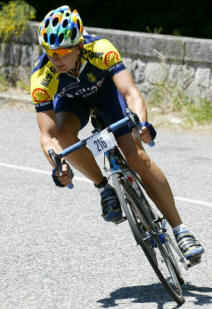
Descending quickly is a science of which there are many unbreachable rules. Laws of physics, and your ability to remain within them, will determine if you are to remain upright or not!
While the application of descending is a science, the ability to descend quickly is an art. You either have it or you don't. The good thing is, it's all learnable. If you haven't got it, you can get it!
The one great satisfaction I get from my riding is nailing a descent.
It's far less painful than riding up and it's one of the very few things in life I'm good at. Here I'll try to convince you that you too can descend as good as a pro.
The Warm Up
The photo above is me
coming off the Col d'Agnes on a 45mph sweeping hairpin bend, over a
bridge in the
L'Ariegoise. What I particularly like is the fact I'm doing all the
right things. Balanced, in the drops, bike cranked over, knee out,
head up, leg down, and looking as far down the road as I can with my
fingers nowhere near the brakes levers!
You could write a book on cornering and descending but here, we just don't have the time or the space. So for now I will just concentrate on getting the corners right. The faster you come out of a corner the faster you will be all the way down the following straight.
I know that sounds obvious, but if you come out of a corner two mph faster than the person behind you, you'll gather momentum quicker. get on top of your gear quicker and could be up to 10 mph faster than them as you reach the next corner.
Then the same happens again, again and again through each successive corner. You can easily make 5-10 minutes on your average foreign descent through this cumulative advantage. No sweat, no extra training, no hours on the turbo. How hard would you have to train to gain 10 minutes per climb on the way up?
Before we go any further, you now have a couple of options. Read the words then watch the video clips at the end; or watch the video clips then read the words.
Whatever you do, don't just watch the videos then try to emulate what you've seen. It'll only end one way, this way. Don't attempt any high speed descending unless you fully understand what you are doing and why you are doing it. Trust me, crashing is a vastly over rated experience.
First things first
Before you attempt any of the manoeuvres, skills or abilities in this
article, please make sure you read the section at the foot of this page on bike set up. If your bike isn't right you'll at best not have the confidence you need
to go fast and at worst end up on the floor, in a wall or over the edge.
Descending itself isn't dangerous; descending whilst you, your mind or
bike aren't in top condition, is.
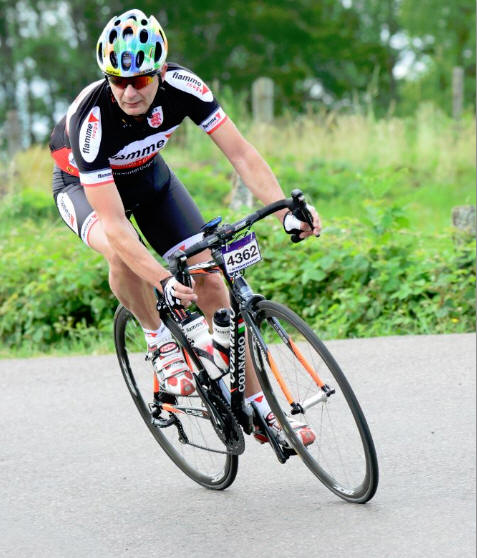
Turn your head before you turn your bike
ready to hit 93 kph on the Col de Cheveres
Round the Bend
It's my opinion, and
experience, that the vast majority of people turn in to a
corner far too early. They limit their options, minimise their
escape strategies, compromise their view of obstacles and place
themselves, and others, in danger. There is no advantage
whatsoever to turning early in to a corner.
Did you see the last corner of 2009's Tour de France? Columbia and Garmin going head to head and side by side heading in to the last corner. Columbia (Renshaw & Cavendish) go wide and sweep in at totally unabated speed. Garmin (Dean & Farrar) try to go under them to straight-line the corner. Garmin, get pinched, slam on the brakes, the bikes sit up and they're heading for the outside wall and oblivion.
Cavendish and Renshaw finish one-two, there isn't even anyone else in the same TV shot as they cross the line!
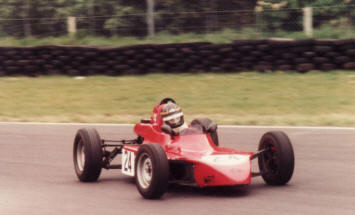
Forget all the old school stuff of racing drivers and motor bike racers straight lining the corners and hitting the apex early. That was in the days of cross-ply tyres.
It's an old wives tale and doesn't relate at all to cycling, it doesn't even relate to car racing anymore. So no more talk of "hitting the apex". Now I've got that out of my system, let's go to our first bend in the road.
Clues,
Cues
and Queues?
With there being so many clues as to which direction a road goes, it never
ceases to amaze me how people can get it so terribly wrong. I've
been out of the saddle full-on accelerating into alpine descents and
corners (I've never seen before) passing people who are already hard on
their brakes and hard on their nerves.
Now I'm no braver, or foolhardy, than the next man, and I'm really not knocking anyone's ability. If in doubt by all means brake. But don't try to buy yourself thinking time before the corner by slamming your brakes on. Just take in all the available clues, assimilate it and act according to the information presented to you.
Rule number one; don't look, see! Don't passively look at the road. Take in the information presented to you and take positive action, don't react to assumptions, nervous expectations and fear of what isn't there. Free your mind.
For instance. Coming over the Izoard, in the Luc Alphand, you can see the next two miles of road laid out before you down and past Napoleon's Refuge. Yet some people still managed to make a hash of the first five corners on the way down. Brakes hard on, bike upright and drifting towards the edge of the road.
What where they looking at? Twenty k's of descent to go and already they're on the back foot, nervous and braking the whole way down.
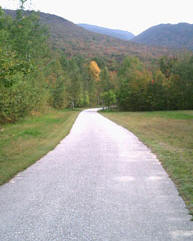 The trees
and the immediate environment give you vital and undisputable cues as to
what lies ahead.
The trees
and the immediate environment give you vital and undisputable cues as to
what lies ahead.
It doesn't take a genius to see that the road leaving this photo goes right. But what then?
Look at the sloping hill from left to right. Unless there's a tunnel, or big hill, the road can't go through or over it. The road has to continue right for a mile or so before it turns, left, right again, then probably left to leave the valley at the end of the third hill.
Now there may be lots of little things in the way before then, but you get the gist. At least we have an idea where we are going before we get there. Look beyond the beyond to get the big picture.
If there are bus stops on your route, expect a bus to be stopped somewhere, especially if you see someone queuing, walking towards one or away from one. If people are walking away, the bus could be ahead of you around the next corner.
What about horses? We have loads of them here in Jersey. Again, it doesn't take Einstein to work out that fresh stuff on the roads means they can't be far away! So don't dodge the steaming stuff in the middle of the road then go ploughing in to that blind left hand bend expecting it to be clear.
All these, blindingly obvious, and hundreds of more subtle clues are there if you know where to look and how to process the information given while travelling at speed.
And finally, always concentrate on the absolute farthest you can look down the road and scan back to where you are. Look where the road in the distance converges to a single point, the vanishing point and watch the direction in which it turns. You should never be surprised that the road goes a different way to that you were expecting.
Bikes don't crash, people cause them to crash. And they only crash when something unexpected happens. Always "expect the unexpected", as a famous French detective once said. No matter what you're doing always have a planned escape route; always.
If anything was to happen right now (figuratively speaking) what would you do and where would you go. Where's the safest place to bale out? What's the path of least resistance? Always think, if a car came now where would I go, and how would I get there? Always think safety.
Frankie says Relax
 Before
you undertake any of the following you need to be totally relaxed.
If you're tense it feeds in to the bike And these latest super-stiff
bikes don't react well to tension.
Before
you undertake any of the following you need to be totally relaxed.
If you're tense it feeds in to the bike And these latest super-stiff
bikes don't react well to tension.
Prove to yourself you're relaxed by just sticking the tip of your tongue between your teeth. Do it now while you're reading this. If you become tense (or not fully relaxed) at any time reading this article (or descending) you'll feel your teeth pinch your tongue!
Any tension in the arms, shoulders or hands compromises your control of the bike. Would you want to be doing 40mph, round a bend you've never seen before, on something of which you don't have full control? Relax. A relaxed descender is a happy descender.
Here's how relaxed you should be, just don't try it for yourself just yet...
The
Three Parts of a Corner
The three parts of a corner are the braking, the turn in point and the exit
phase. However, before you get to the corner there is the entry
phase So we'll cover that first..
Before you get there...
As you approach the corner you should be fully aware of who and what is
around you. Where are the other riders? What are their
skills? Is anyone likely to pass under me, or brake hard in front
of me? If it's wet, will they brake earlier? Where are the
cars, or where might they come from? If they do appear, where can
I go?
Always assume that a car is going to appear, turn or do something unexpected. Always expect the worst and plan your potential escape route. Always expect gravel on the inside and outside of turns. Is that dog on a lead? And as happened in a couple of sportifs in the recent past; are those loose horses actually in the field? The answer both times was no!
In the entry phase of a corner, riding a foot from the kerb, get in the drops, and look as far along the road as you can see, then scan back to where you are. You are about to brake very, very heavily and need to make sure the road surface, and the grip you will be asking of it, are available and up to the job.
Is it dry? Are there any loose bits? Which way is the camber? Is it downhill? Are there any holes, ridges or overbanding? Can you see the exit yet? These factors and many more will affect your decision on how the corner is taken, at what speed and from which angle. And you have very little time to answer those questions so pay attention.
Change down to a gear that will help you exit the corner, and the danger area, as quickly as possible. This will become second nature with experience. Being in the right gear will help you save energy when "sprinting" out of the corner.
Part One ~ Braking
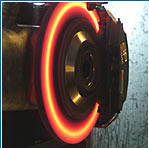 You need to enter the corner (relatively)
slowly to exit it quickly. Fast in usually means either slow out
or not out at all!
You need to enter the corner (relatively)
slowly to exit it quickly. Fast in usually means either slow out
or not out at all!
People think I'm fast downhill because I take the corners quickly. There is an element of that but my time is made up by braking for a quarter of their braking time and distance I enter the corner probably only a kilometre or two faster than most. It's just that I took less time to get there.
Make sure you can see clearly to the end of your full expected braking distance. If you can't come to a complete stop within the full distance you can see, you're going too fast. If anything goes wrong, you will not be able to stop in time and your life will become very exciting, very quickly. And not in a nice way!
Once in the correct gear to exit the corner it's now time to brake. Do not grab, snatch or throw on the brakes. Get both sets of pads quickly but smoothly to both rims and feel them just brush the surface.
Then gently but forcibly apply the front brake while holding the back one steady and just brushing the rim. As you brake the weight of you and the bike immediately transfers to the front wheel. What was a previous 45/55 front to rear weight balance has now gone to 70/30, if not 80/20 on a downhill, or even 90/10 on an alpine hairpin.
As the bike's weight transfers, and inertial forces cause it to become unstable, the ability of the front wheel to grip the road increases and paradoxically the ability to crash is enormous. Because the rear wheel has now unloaded and is ready to lock without notice.
This is the most dangerous phase of any corner. Anything that happens from here on in is a product of your actions. So do everything quickly, smoothly and without drama.
Once you start braking, the front wheel becomes much more capable of handling even greater braking force and the rear wheel less so. In some cases you can brake that hard you can feel the rear lift from the ground. To prevent this. and to keep your bike in a stable a state as possible, slide your bum backwards on the saddle to keep the rear wheel in place and even out the weight distribution.
The back brake is only used to stabilize the rear end and stop it coming round. With your bum over the back wheel you've dramatically increased it's capacity to grip and re-established a 60/40 weight distribution. You can now apply more rear brake to dramatically reduce your braking distance. Having said that, grip the rear brake as lightly as you would hold a day old chick.
The pads and rims will now be getting quite warm, which means their grip increases substantially. So as you get closer to the turn in point slowly relax the tension in your fingers and ease the brakes off to stop them grabbing.
A hot wheel requires a lot less "pull" on the brakes to generate the same braking force than a cold wheel does. If you hold the same amount of "pull" on the brakes all the way up to the corner turn-in you risk a front wheel snatching, or tucking under; neither of which is a good outcome.
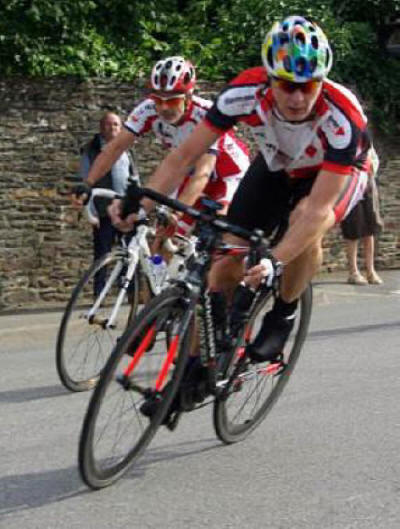
As you reach the turn-in you should be looking as far ahead out of the corner as you can (two to three hundred metres) and at nothing else. When you see the exit of the corner you now have to do what you need to do quickly, smoothly, with purpose and seamlessly, as though it was all one action.
Part Two ~ The Turn In
The instant you see the exit, you should release both brakes at exactly
the same rate. Don't just let go, do everything gently and with
purpose. Ease the brakes off, don't destabilize the bike, the
tyres or the grip by rushing it.
Brakes are not switches that are on or off, they have levels of grip that affect how a bike reacts. Ease the brakes off then get your hands well away from the levers. You won't be needing them again in this corner.
 To
prove you have got your hands off the brakes, wrap your thumb over your
fingers. This removes the temptation to brush or grab the
brakes again and unleash chaos on yourself.
To
prove you have got your hands off the brakes, wrap your thumb over your
fingers. This removes the temptation to brush or grab the
brakes again and unleash chaos on yourself.
As you release the brakes the weight transfer begins to unload from the front, which is a bad thing. If you remember, your bum's hanging over the back of the saddle, which in effect lifts the front wheel from the ground reducing its ability to grip.
We're only talking half a millimeter of movement here, you're not going to pull a wheelie!
As you know, the front needs to grip to turn in, so that's where you need your weight.
As you release the brakes, slide your bum forward (again only a centimeter or two) to the middle of the saddle to get the weight distribution back in favour of the front wheel.
The front is the bit that needs grip to get us round the corner, so you need to "push" the front into the ground. Lean in to the bike and get your "relaxed" shoulders over the bars.
Get your outside crank at the six o'clock position and push down for all your worth with your outside leg. Lift your bum slightly, just two to three millimetres off the saddle, to help ensure you're weight has transferred.
Point your inside knee to the corner apex to help the turn in, and look at nothing else but as far down the exit road as you can. Pick a house, a tree, a lamp post, anything that's as far away as you can see, that has direct line of site between you and where you want to be. And don't take your eyes off it!
The
Secret Ingredient?
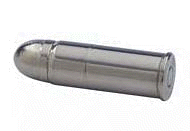 This bit is the magic bullet,
but you need to practice it on a slightly downhill, wide, straight,
quiet road. With absolutely no one, or anything; cars,
cyclists, road furniture, or any other hazard, around you.
This bit is the magic bullet,
but you need to practice it on a slightly downhill, wide, straight,
quiet road. With absolutely no one, or anything; cars,
cyclists, road furniture, or any other hazard, around you.
Again, it's all to do with vehicle dynamics, science and belief in yourself and your equipment. To practice, get on a road as described above and get in the drops.
Get the bike up to 10mph in the centre of the road and stop pedalling. As you slowly roll forward, with your hands on the drops, open your palms so the thumb is on the inside of the bar and your fingers are on the outside. Your digits should be parallel to the ground with only the palm in contact with the bars.
Now, VERY gently push down and away from yourself at 45 degrees with your right hand. Your bike will miraculously move to the right; very quickly and very disturbingly. Do the same to the other side and hey presto you're going left!
You're on a straight road doing nothing but moving your palms a centimeter or so, and your bike is moving a metre from side to side in the blink of an eye! The harder you push away from you, the quicker the bike will turn.
As you get more experienced and confident with this phenomenon called counter-steer, you can get the bike to turn very, very quickly. The bike will turn through 45 degrees almost within it's own length.
The sooner you get the tyre off it's centre tread, and on to it's shoulder, the faster, better and safer the bike will corner.
One of the main reasons why people have difficulty in cornering is because they don't get the tyre on to its shoulder. The shoulder is where the grip is and where the tyre's circumference is less, making it turn tighter than it would if it where on its crown.
That's why cycle tyres are rounded and car tyres are squared off. Cars don't lean to get around a corner!

A 60kph corner, Col de la Cluse, in the Alps.
Head up, knee out, arms relaxed, hands off the brakes.
Zoom in to see the thumbs over the fingers!
Part Three ~ The Exit
Once
you've got the bike on its side you can now fully see the exit and where
you need to be. If
there is any obstruction in the road, DO NOT look at it. Your bike will follow your eyes. If you look at a stone, or a hole
in the road and think "I mustn't hit that", guess what will happen?
Answers by email to the usual address.
If you think you're going to hit road debris, quickly pick the bike up, continue to look at the exit, then lay the bike over again. If you've got your escape route planned you should have loads of room to manoeuvre and it should all happen in the blink of an eye with no fuss, drama or tension.
Look as far down the road as you can and pick up your straight-line landmark (The Arc de Triomphe?). The bike will track straight for it. You can now begin to lift the bike up, gently raise your bum out of the saddle and begin to get on top of your previously chosen gear.
Keep looking down the road and revel in your mastery. There is nothing behind you to help you, so don't look back, EVER!
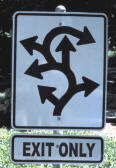 Remember,
you turned in late and quick which gets the bike through the corner in
half the time as an early turner and allows you to begin your exit phase
sooner.
Remember,
you turned in late and quick which gets the bike through the corner in
half the time as an early turner and allows you to begin your exit phase
sooner.
You've also given yourself tons of advance warning of any issues that may arise and given yourself the time to deal with them.
Also, you've exited parallel to the wall, the big drop, the oncoming traffic, or the trees on the outside of the bend. You're not heading for them like the early turner would be, who's now probably hard on the brakes.
If you want confirmation of this look a the French rider behind me in the shot above. Hands on the hoods, heavy braking, bike upright, looking the wrong way, bike heading exit stage left! If I'm already in the corner, where's he going?
Choose your exit, don't let it be dictated to you by nerves, bad planning, circumstances you've not anticipated or just plain incompetence of other riders. The rider behind him looked at him, took his eyes off the road and followed him wide also. Don't get sucked in to other rider's mistakes.
The sooner you can get on the gas the sooner you begin to capitalize on your gained time and the sooner the bike gets you out of the danger zone.
All those people, of which you were totally aware at the turn in phase, should now be some way behind you. Your problem now is how are you going to deal with those riders rapidly coming backwards towards you as the next corner and braking zone approaches. Now it starts all over again.
 Confidence
Confidence
The first big problem with cornering at speed and
descending like a pro is that it becomes addictive.
The second problem and it is a big one, is complacency. To corner like a pro you need to concentrate like a pro.
You must pay attention and focus far more than those that just amble through the turns on a glorious, hell bent, white knuckle ride.
The concentration is constant. The second you stop concentrating you and those around you are in danger.
If you stop concentrating, sooner or later, you will get bitten.
The pay back for all this concentration is that you corner with less stress and burn far less nervous energy than those for whom every corner is an adventure. In other words you actually save yourself energy and go quicker at the same time. How fantastic is that?
The confidence descending gives you is a great leveller. You know you can let others drift away from you on the climbs, especially in the last K, because you can get them back on the descent. Especially in a 190K cyclo. Every ounce of energy saved is a bonus and when you save energy you build confidence. When you're full of confidence you can do anything.
Proof it works
The last time I descended Mont
Ventoux, I was over 50 mph for many, many minutes at a time and was only slightly
slowed by the corners. I passed at a very conservative minimum, at
least a 100 riders.
With a top speed of 59.4 mph, down not up, you cannot believe how upset I was at not breaking 60mph! I know Tour riders go quicker, but they have cars and motorbikes to slipstream. Despite these stats, never once, at any time did I put myself or others in danger or think I was going to have a spill.
Having climbed Alpe d'Huez in my best ever time of 58:40, to the ski station TdF finish line, not the water fountain before the bridge, I then descended it, from the water fountain for safety's sake, in eleven minutes and twelve seconds.
Even though I bettered my previous day's time by 20 seconds, I did feel a tinge of disappointment. My first attempt was 12 minutes with Dave, Steve & Rob. Next time I'm determined to break 11 minutes. It can be done and be done safely. All it takes is knowledge, self-belief and confidence in your equipment.
The Message
 Click
the image on the right for a full page downloadable PDF file as an aide
memoire on what to do and when to do it.
Click
the image on the right for a full page downloadable PDF file as an aide
memoire on what to do and when to do it.
If it's true, a picture paints a thousand words, I should have just posted the picture and saved all this writing!
Keep descending, keep safe and keep upright. You won't be needing luck, because you've prepared properly and read this factsheet.
Now, you've read the words, take a look at these skills in action. Notice how Cancellara spends an awful lot of time looking up the road or across the valley; his bum constantly moves backwards and forwards on the saddle and the knee is out!
You cannot believe how many forum discussions there are on the internet regarding this article and how I'm wrong about the knee thing! I really, really, really have to do everything I can not to reply!!!
Descending at 40 mph you can keep your knee in, if you really, really want to. Descending at 60 mph, you better make sure it's out!
If you think that's good there's a full on seven minute version here ...
From a Jersey perspective, here's a quick 75kph trip down a very bumpy Beaumont Hill. From the top of the island to the meeting point of the Gunsite Grupetto on the sea shore.
Don't worry, sometimes you have to let the bike drift wide to miss manhole covers or to ride the bumps!
And if you have another ten minutes spare, here's one of the biggest buttock-clenching, adrenaline thrill descents you'll ever see. 115kph on a randomly damp 2011, Tour de Suisse, Stage Three adventure ride. Don't watch if you're nervous!
Keep safe until next time...
Please Read This!
Preparation is everything
Before you attempt any descents, at any speed, you need to have a
bike that's perfect in every way.
The tyres need to be checked, as they should for every ride, for flints, cuts, bruises and general wear.
Let two-thirds of the air out of your tyre and starting at the valve, inspect every inch of the tyre's circumference by squeezing the walls together and looking for "holes" with bits in them. With a scribe (or a tooth pick, tiny screwdriver or opened paper clip) carefully tease every chunk of glass, thorn or debris from the tread.
Don't stop until you get to the valve again.
Although it seems a pain, it takes less than five minutes to do this and it could save you at best endless hassle at the side of the road and at the worst a damaged wheel on a deflation.
Make sure your brakes touch both sides of the rim at exactly the same time. Again an obvious statement but you wouldn't believe how many off-centre setups I see. If you've taken your wheels out for transportation this is a must. Don't just spin the wheel, it proves nothing.
If the brake blocks are set right, you'll hear a reassuring cluncking sound and feel a positive response from your brake lever when you sharply apply the brake. If you don't hear the sound, the chances are one pad is touching the wheel before the other.
If one touches before the other, as you look directly down over the top of your tyre, you'll see the wheel move. Tweak the brake by centralising it until it doesn't and you hear the "clunk". If your wheel is getting pushed to one side the brake lever will feel spongy and not inspire you with the confidence, feedback or modulation you need to be brave.
Cables and their outer sheaths should obviously not be damaged or unravelled. When the wheels are out you should also check the pads for depth and "bits" in the drain channels. If there are get them out.
As a minimum final check, make sure your headset is in perfect order. It shouldn't move when the front brake is full on (no back brake) and you push the bike forward.
It shouldn't stick when you lift the bike six inches off the floor and let the bars roll from side to side and it shouldn't rattle when you drop the front wheel back to the ground.
Once these factors have been addressed you can at least have confidence in your machinery. Which is half the battle of going quick.
Stay safe, be aware of other road users, you are accountable for your actions, and enjoy the thrill of descending quickly, safely and with confidence. Because there is no greater feeling on a bike.








